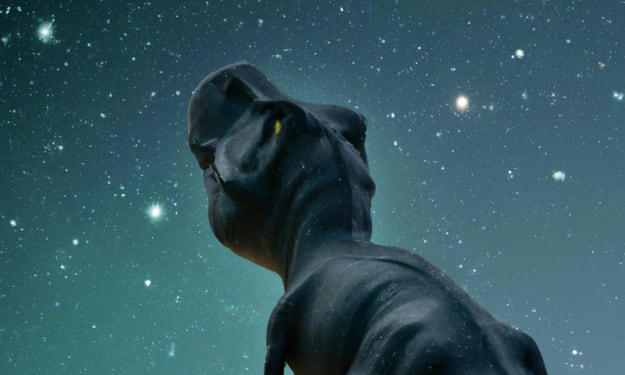Found in Space: A 10 Trillion-Carat Diamond
A diamond of 10 trillion carats was discovered in space.

The discovery of a gigantic space diamond measuring 10 trillion carats is making news all over the world! This uncommon and unique discovery has experts intrigued, though many are unsure of its actual market value. Join us as we investigate the interesting tale that led to this amazing finding and discover more about the enigmas of the cosmos.
A space diamond weighing an incredible 10 trillion carats has been found, which has captured the interest of the entire world. This amazing finding, which was first made public in 2021, has revived the world's interest in the universe's riddles and led to a fresh wave of investigation. Experts are unsure of the origin, make-up, and potential worth of this space diamond, which is thought to have formed billions of years ago. This essay will analyze the implications of the 10 trillion-carat space diamond for our knowledge of the universe as well as the amazing tale that led to its discovery.
A star known as "Lucy in the Sky with Diamonds" can be found in the Centaurus constellation. Yes, the star was given the name of a Beatles song since it was found to contain a large diamond at its heart. According to estimates, it weighs around 10 billion trillion trillion carats—that's a one and 34 zeros! The Hope Diamond, one of the biggest diamonds on Earth, is only 45.5 carats in contrast, to give you some perspective. Let's see more strange stars; this one isn't the most unique one we've seen.
How about flashing stars with surfaces composed of solid iron? Let's look at these strange stars and attempt to solve their mysteries. Have you heard of a diamond star that could rival all the wealth on Earth?
There's a star in the Centaurus constellation that was nicknamed “Lucy in the Sky with Diamonds.” Yes, it was named after a Beatles song because it is basically a Beatles song. You see, the star was discovered to have a massive diamond at its core. Now you may be wondering how big this diamond really is. Well, it's estimated to be about 10 billion trillion carats. There's a one and then 34 zeros after that. To put that into perspective, the Hope Diamond, which is one of the largest diamonds on Earth, is a meager 45.5 carats in comparison.
Can you imagine the size of the ring you could make with this star diamond? It's about the same mass as our sun, but don't get too excited about the prospect of owning this diamond just yet. Even if you were Jeff Bezos, you wouldn't be able to afford it. According to Ronald Winston, CEO of Harry Winston Inc. The diamond is so big that it would likely depress the value, so you'd have to settle for a much smaller diamond engagement ring.
One intriguing feature of the Lucy in the Sky with Diamond star is that, despite having the mass of the sun compressed into an object only a third the diameter of Earth, it is actually quite cool, with a core temperature of only about 12,000 degrees Fahrenheit. In contrast, the sun's core temperature is about 27 million degrees Fahrenheit because the disc of our sun is much larger.
It just goes to show that the universe is full of surprises, and you never know what kind of treasures you might find out there in the vastness of space. This isn't the only weird star we've discovered thus far; there are many strange, unexplained things in outer space. For instance, let's take Vega, a star that has been found to be crystallized. Vega, also known as Alpha Lyrae, is a bright star in the constellation Lyra that is easily visible with the unaided eye from most places in the world.
However, Vega may appear to be a beautiful bright star to those of us in the Northern Hemisphere, but little do we know that it is actually quite squashed. Vega is basically a cosmic fitness guru's worst nightmare because of its high spin rate, which causes it to bulge at the equator like a cosmic belly. It rotates once every 12.5 hours, which is pretty fast for a star, and it throws material out around its waistline, almost like the star is hula hooping. Because this material is farther from the center of the star, it experiences less gravity, which causes it to cool and darken, leading to a
The next star in our show, a celestial object with the odd name Ipft 14 Hls, experienced what is known as a supernova, a giant space boom that happens when stars reach the end of their life cycle. Supernovas are like the grand finale of a fireworks display, but on a cosmic scale, they release more energy in a few seconds than our sun will produce in its lifetime. There's a problem: It is not your typical supernova. Even though this star made a big splash in 2014 and began to fade away as usual recently, it made an unexpected comeback and brightened once more. Talk about a dramatic entrance, and if that wasn't enough, this thing continued to fade and brighten at least five times in total, kind of like a yo-yo, as if the star couldn't decide whether it wanted to stay bright or fade away into the abyss. Additionally, when scientists measure the supernova, overall, this item is really mysterious.
However, this star is not the only one who suffers from the "two-in-one syndrome." My camelot is initially appeared to be a fairly common star, but upon closer inspection, astronomers discovered that it was actually two stars in one. These two stars are orbiting each other at over 600,000 miles per hour and are part of a contact binary star system, meaning that they are so close to one another that they share a common envelope. One of the most massive binary stars known to exist is the celestial Romeo and Juliet, which each weigh an enormous 32 and 38 solar masses, respectively.
Who knew space could be so romantic? Next, introducing another long name, astronomers believe they may be on the verge of a stellar merger, which would imply that one day they might fuse into one massive star. Also known as Methuselah's Star, HD140283, this little guy in the constellation Libra has been around for a while, and by a while, I mean a really long time; actually, scientists used to think it was older than the universe itself.
Just imagine if it turned out to be true, but eventually they figured out that it's actually around 14.8 billion years old, a peer of our universe that's still pretty impressive. Though this star is so old, it remembers when the Milky Way was just a baby galaxy, but despite all that, it still has some life left in it. It's just starting to expand into a red giant, which is kind of like when you hit your 30s.
Talk about aging well. But if all these things are somewhat comprehensible, then how about a star that was literally named WTF Star by scientists? No, I'm not kidding. At least it used to be. Now it's called Tabby Star. It also has a more scientific name, but that one is a bit of a mouthful. But what's really bizarre about this star is its irregular dimming. For some reason, it doesn't glow like a normal star but blinks as if someone turned on and off a flashlight, and it's not just a little dip; we're talking up to a 22 percent drop in light, so it's not because it sometimes gets blocked by a planet or something.
Scientists have come up with all sorts of explanations for this strange behavior, from comets to dust to even an extraterrestrial megastructure. That's right. But before your imagination runs too wild, it's important to note that the most likely explanation is just plain old dust. Perhaps the star is surrounded by some kind of dust cloud, and sometimes it prevents us from seeing it clearly, although this explanation is still not 100 percent confirmed.
There are still plenty of mysteries surrounding Tabby's Star. There is so much more to learn about the cosmos, so let's keep exploring and continue to be astounded by its wonders. It may be a bit of an oddball, but that's what makes it so fascinating. So there you have it, folks. We're left in awe of the incredible diversity and strangeness of the cosmos.
The finding of the 10 trillion-carat space diamond has opened up new options for investigation and study of the universe's mysteries. Experts are extremely interested in it because of its unusual makeup and origin, and many people are unsure of its relevance for the global diamond market given its potential worth. Beyond its usefulness, the Space Diamond also serves as a reminder of the amazing wonders that exist outside of our solar system and the size of the cosmos, which we are only now beginning to explore.
The unexpected discovery of the 10 trillion carat Space Diamond has surely caught everyone's attention and reignited curiosity in the universe's mysteries. Even while the diamond's exact worth is still unknown, its discovery has created new opportunities for academics and scientists to investigate the beginnings of the universe and the forces that govern our cosmos. Discoveries like this one serve as a reminder of the magnificent wonders that exist beyond our planet and motivate us to keep aiming for the stars as we continue to explore the depths of space and unlock its mysteries. The 10 trillion carat Space Diamond is a truly amazing discovery and a testament to the power of scientific inquiry and discovery.
About the Creator
Althea March
I am a writer who searches for facts to create compelling nonfictional accounts about our everyday lives as human beings, and I am an avid writer involved in creating short fictional stories that help to stir the imagination for anyone.






Comments
Althea March is not accepting comments at the moment
Want to show your support? Send them a one-off tip.